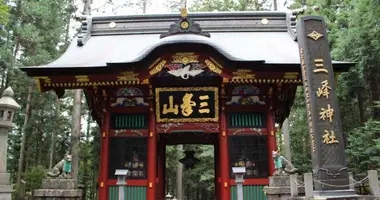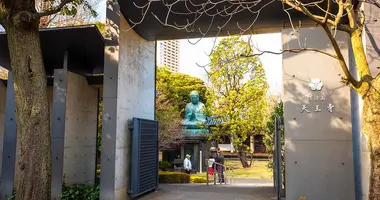Jindaiji Temple Chofu: A serene oasis of history and culture near Tokyo
- Published on : 06/05/2024
- by : Japan Experience
- Youtube
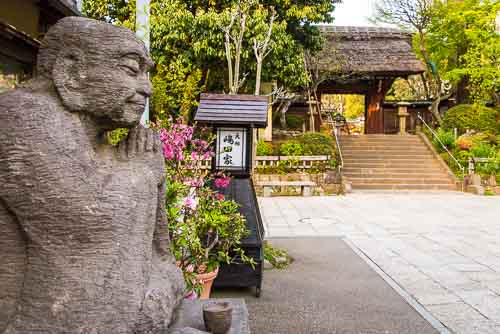
Sanmon Gate of Jindaiji Temple with Soba Noodle Restaurant Statue in Foreground
Nestled in the western suburbs of Tokyo, Jindaiji Temple stands as a testament to Japan's rich Buddhist heritage. Founded in 733 AD, it is the second oldest temple in the metropolis, offering visitors a unique blend of ancient history, natural beauty, and cultural experiences. Just a short journey from the bustling heart of Tokyo, Jindaiji provides a tranquil escape where time seems to slow down. As you approach the temple grounds, you'll find yourself transported to an era reminiscent of old Japan, complete with traditional soba restaurants, quaint shops, and lush greenery. This hidden gem offers a perfect day trip for those seeking to explore beyond the typical tourist attractions and immerse themselves in the serene atmosphere of a historic Buddhist sanctuary.
History and significance of Jindaiji Temple
Jindaiji Temple boasts a history spanning nearly 1,300 years, making it a cornerstone of Tokyo's religious landscape. The temple's founding is shrouded in legend, with its name derived from Jinja Daioh, a deity associated with an intriguing tale of love and divine intervention. According to the story, the temple founder's father prayed to this god while swimming to an island to meet his beloved, whereupon a turtle miraculously appeared to carry him across.
As a Jindaiji History Tendai Buddhist temple, Jindaiji is closely associated with the revered warrior monk Ryogen (912-985), also known as Ganzan Daishi. This connection is celebrated through the temple's unique daruma doll tradition, setting it apart from other Buddhist sites in Japan. The temple's significance extends beyond its age, as it houses the Hokuho Buddha, a national treasure and the oldest Buddha statue in Eastern Japan, viewable only on the 8th of each month.
Throughout its long history, Jindaiji has survived fires and reconstructions, with the current main hall dating back to 1919. This resilience reflects the enduring spiritual importance of the site, which continues to draw visitors seeking blessings for love, marriage, and other aspects of life.
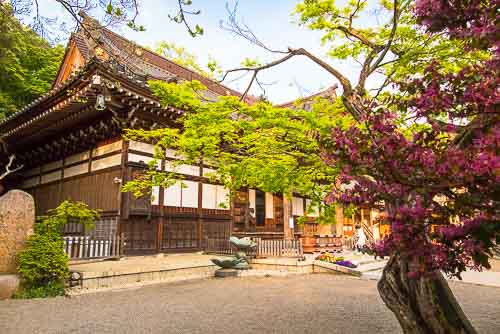
Hondo Main Hall of Jindaiji Temple
Exploring the temple grounds and main attractions
As you enter Jindaiji Temple through the historic Sanmon Gate, you'll be immediately struck by the peaceful ambiance and traditional architecture. The gate itself, dating back to 1695, is one of the few Edo-period structures remaining in Tokyo. Beyond the gate, the temple grounds unfold, revealing a harmonious blend of nature and religious edifices.
The Jindaiji Temple Buildings include several noteworthy structures:
- The Honden (Main Hall): Rebuilt in 1919, it enshrines the principal Buddha statue.
- Ganzan Daishi Hall: Dedicated to the monk Ryogen, it houses his rarely displayed effigy.
- Shakka-do (Buddha Hall): Home to the national treasure Hokuho Buddha statue.
As you explore, you'll encounter serene ponds filled with koi carp and turtles, symbolizing longevity and good fortune. The temple grounds are also home to a variety of trees and plants, creating a lush, green environment that changes with the seasons. Don't miss the opportunity to ring the temple bell, a tradition believed to cleanse the soul and bring good luck.
For a unique experience, visit the Jindaiji Pet Cemetery, marked by a tall stone stupa. While not officially part of the temple, it offers a touching glimpse into the bond between humans and their animal companions.
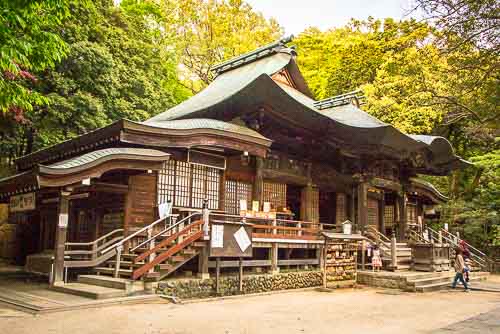
Ganzandaishido Hall, Jindaiji Temple, venerating the monk Ryogen
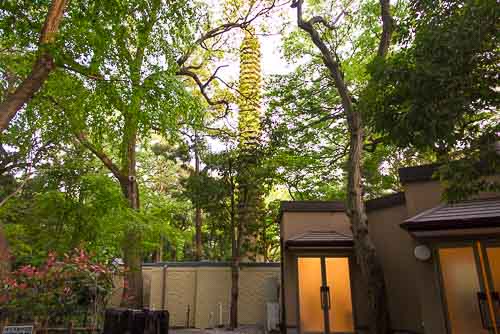
Jindaiji Pet Cemetery
Visiting information: Opening hours and access
Jindaiji Temple welcomes visitors daily from 8 a.m. to 5 p.m., with free entry to the main grounds. To make the most of your visit, consider the following Jindaiji Hours and Access information:
The temple is easily accessible from central Tokyo:
- From Chofu Station (Keio Line): Take bus no. "Cho 34" to Jindaiji bus stop (about 15 minutes).
- From Kichijoji or Mitaka Stations (JR Chuo-Sobu Line): Take a bus bound for Jindaiji (about 25-30 minutes).
For the best experience, plan to arrive early in the day to enjoy the peaceful morning atmosphere and avoid potential crowds. Remember that the Hokuho Buddha statue is only viewable on the 8th of each month at 9 a.m., so time your visit accordingly if you wish to see this national treasure.
The surrounding area: Edo-period charm and culinary delights
The area surrounding Jindaiji Temple is a destination in itself, offering visitors a glimpse into Edo-period Japan. The approach to the temple is lined with charming traditional shops and renowned soba restaurants, some of which have been serving their signature buckwheat noodles for centuries.
These Sanmon Gate Soba Shops are more than just eateries; they're a vital part of Jindaiji's cultural heritage. Each restaurant offers its own unique take on soba, with some featuring pure buckwheat noodles. The tradition of soba-making in Jindaiji dates back over 300 years, making it an essential part of any visit to the temple.
As you stroll through the area, you'll notice the old-world architecture and peaceful atmosphere, enhanced by the surrounding trees and small streams. This quaint "township" feel provides a stark contrast to the modern cityscape of central Tokyo, allowing visitors to step back in time and experience the tranquility of old Japan.
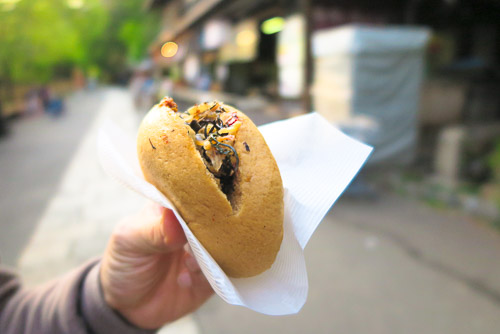
Soba Burger in front of Jindaiji Temple, Chofu
Spiritual experiences and cultural activities at Jindaiji
Jindaiji Temple offers visitors various opportunities to engage with Japanese spiritual practices and cultural traditions. One of the most popular events is the Jindaiji Daruma Festival, held annually on March 3-4. This festival celebrates the temple's connection to Ryogen and features a unique tradition of daruma dolls.
Unlike other temples, Jindaiji's daruma dolls specifically represent Ryogen, and the process of filling in the doll's eyes involves writing Sanskrit characters rather than simple ink dots. This distinctive practice adds an extra layer of meaning to the act of making wishes and setting goals.
Throughout the year, visitors can participate in various spiritual activities:
- Praying for success in relationships, particularly love and marriage
- Participating in meditation sessions (check with the temple for schedules)
- Experiencing the Goma fire ritual, a purification ceremony (usually performed daily)
- Purchasing omamori (protective charms) and ema (wooden plaques for writing wishes)
These activities provide a deeper understanding of Japanese Buddhist practices and allow visitors to connect with the spiritual essence of Jindaiji.
Jindaiji Temple through the seasons: Best times to visit
Each season brings its own charm to Jindaiji Temple, offering visitors unique experiences throughout the year:
- Spring: Cherry blossoms bloom, creating a picturesque setting
- Summer: The lush greenery provides a cool retreat from the city heat
- Autumn: Fall foliage paints the temple grounds in vibrant colors
- Winter: A dusting of snow transforms the temple into a serene winter wonderland
The Daruma Festival in early March is a particularly lively time to visit, with the temple grounds filled with visitors and festive stalls. For a more tranquil experience, consider visiting on a weekday morning during the off-peak seasons of late spring or early autumn.
Nature enthusiasts should note that the nearby Jindai Botanical Garden complements the temple beautifully, offering seasonal floral displays that enhance the overall experience of visiting Jindaiji.
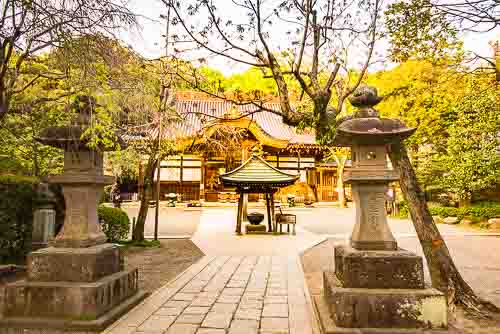
View of Hondo Main Hall of Jindaiji Temple
Practical tips for visitors to Jindaiji Temple
To make the most of your visit to Jindaiji Temple, consider these helpful tips:
- Wear comfortable walking shoes, as the temple grounds and surrounding area involve some walking
- Bring cash, as many small shops and restaurants may not accept credit cards
- Try the local soba noodles for an authentic culinary experience
- Visit the Jindai Botanical Garden in combination with the temple for a full day of natural beauty
- Consider purchasing a Chuo-Sobu Line day pass if you plan to explore other areas along the line
- Check the temple's website or local tourist information for any special events or seasonal illuminations
Jindaiji Temple offers a perfect blend of history, nature, and cultural experiences, all within easy reach of central Tokyo. Whether you're seeking spiritual enlightenment, a peaceful escape from the city, or simply a taste of traditional Japan, Jindaiji promises a memorable and enriching visit. As you leave the temple grounds, you'll carry with you not just souvenirs, but a sense of the timeless serenity that has drawn visitors to this special place for over a millennium.
For more information on exploring Tokyo and its surroundings, consider checking out these Guide Books on Tokyo Japan to enhance your travel experience.
















